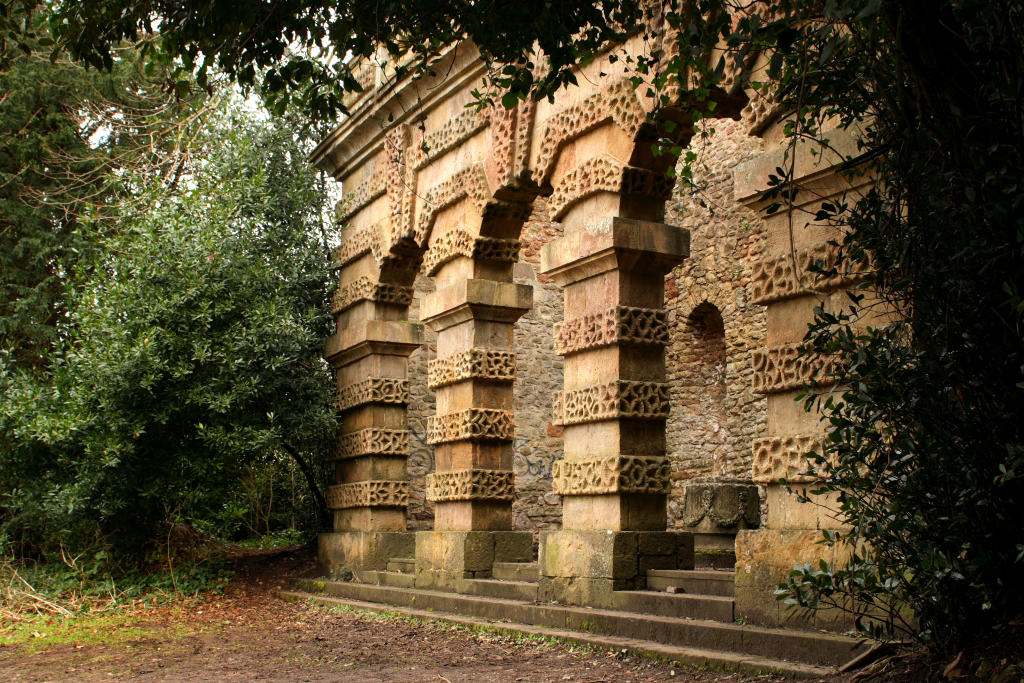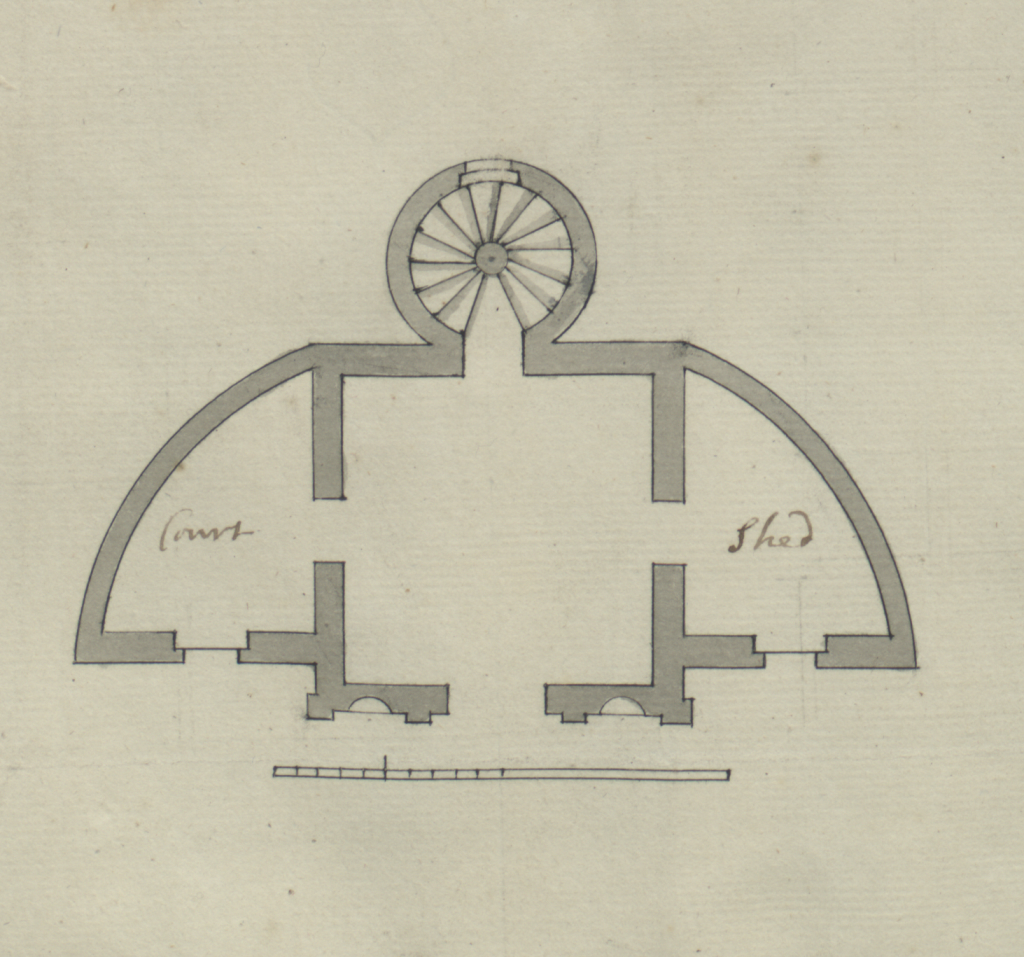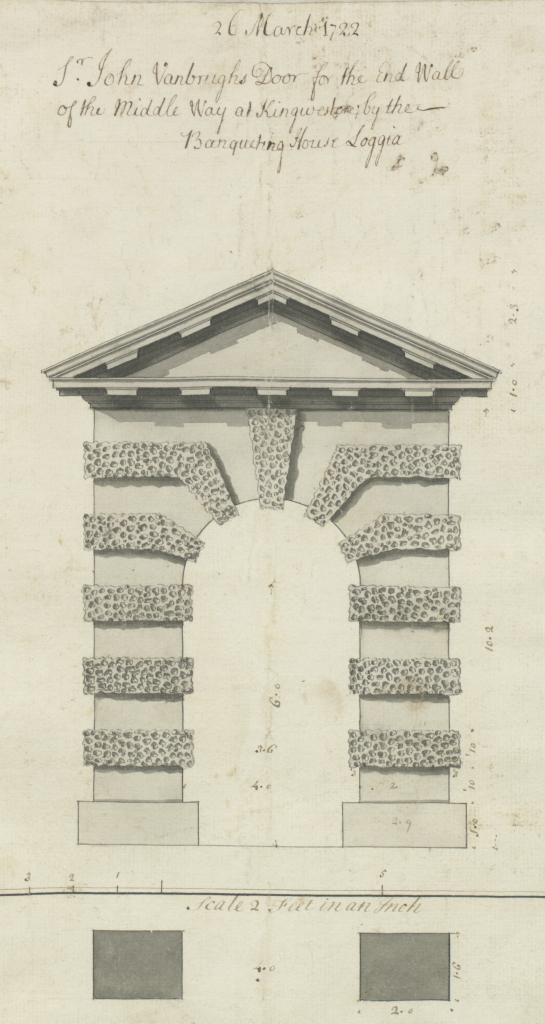The Echo at the end of the gardens from the house, was an important addition to the Kings Weston landscape in about 1724. Edward Southwell had finished work on the house itself and moved in in 1716 with his new wife Anne Blathwayt. Sadly Anne died the year after and it was a little while before Edward returned to his architect, Sir John Vanbrugh, to turn his mind to further elaborating the estate.Plans began in about 1720 when Edward began buying up land to extend the parkland, and had a map drawn up to further this expansion. We know from this that the long axial path from the house terminated at nothing more than a wall dividing the grounds from a public lane behind; parts of this was can still be traced in the rear structure of the present Echo building.

The echo at Kings Weston Was already a well knows acoustic feature. The gradually rising ground allowed sound to reflect back off the front of the house and echo back down the garden in a remarkable way. The termination of the axis from the house with a suitable celebration of this effect, and an eye-catcher from the house, would have seemed an ideal opportunity to provide an ornamental monument.
The Echo, as the pavilion was to become known, is one of the few buildings at Kings Weston where there are no original drawings known. In Bristol archives there is a design by Sir John Vanbrugh for another structure, an ornamental gateway that was to stand at the end of the terrace on the north side of the house; with its boldly handled rusticated piers and arches this has more than a passing resemblance to some of the features of The Echo. The drawing is dated 1724 and it is reasonable to assume that it echoed architectural developments at the other end of the garden at this time. This coming weekend we will try and compare the measurements of this drawing with those of the Echo and see what conclusions we might draw. The dramatic urns on the parapet of the finished building are also strongly redolent of Vanbrugh’s work, with a series of similar features in the gardens at Blenheim Palace.
In the tradition of gardens at the time the Echo would have terminated the long axis through the landscape with a series of formal gardens either side of it. There never seems to have been a viewing terrace on the roof of the building, which might have capitalised on views back to the house and across the landscape towards Bristol. Another drawing in Bristol archives does show the plan of a garden pavilion that would have afforded this; it had a single ornamental frontage with odd carved rear walls and a stair tower at its rear, but, other than its inclusion with other known Kings Weston drawings, there is insufficient evidence to suggest it was even considered for Kings Weston.

The little building served no more elaborate purpose than a place to sit, admire the view back towards the house, enjoy the echo, and perhaps enjoy a summer meal. The arches were never glazed in, but the roof, that once sheltered visitors, disintegrated and collapsed in the 1950s; the scars of this can still be seen in the structure today. Efforts to demolish the garden buildings in the 1970s were fortunately resisted, and eventually the Echo was patched-up and restored. The Echo remains an important landmark in the park, a focal point on the main walking circuit, and a Grade I Listed building. The gardens that once swept down the slope to the house have been overtaken by woodland, and views between the two buildings lost or diminished. Sadly the echo from which the building got its name has also been diffused. But this weekend we will be celebrating the building again by holding our Doors Open day event within it. Come along and find out more about the building and its history on one of our short tours to be running throughout the day.

